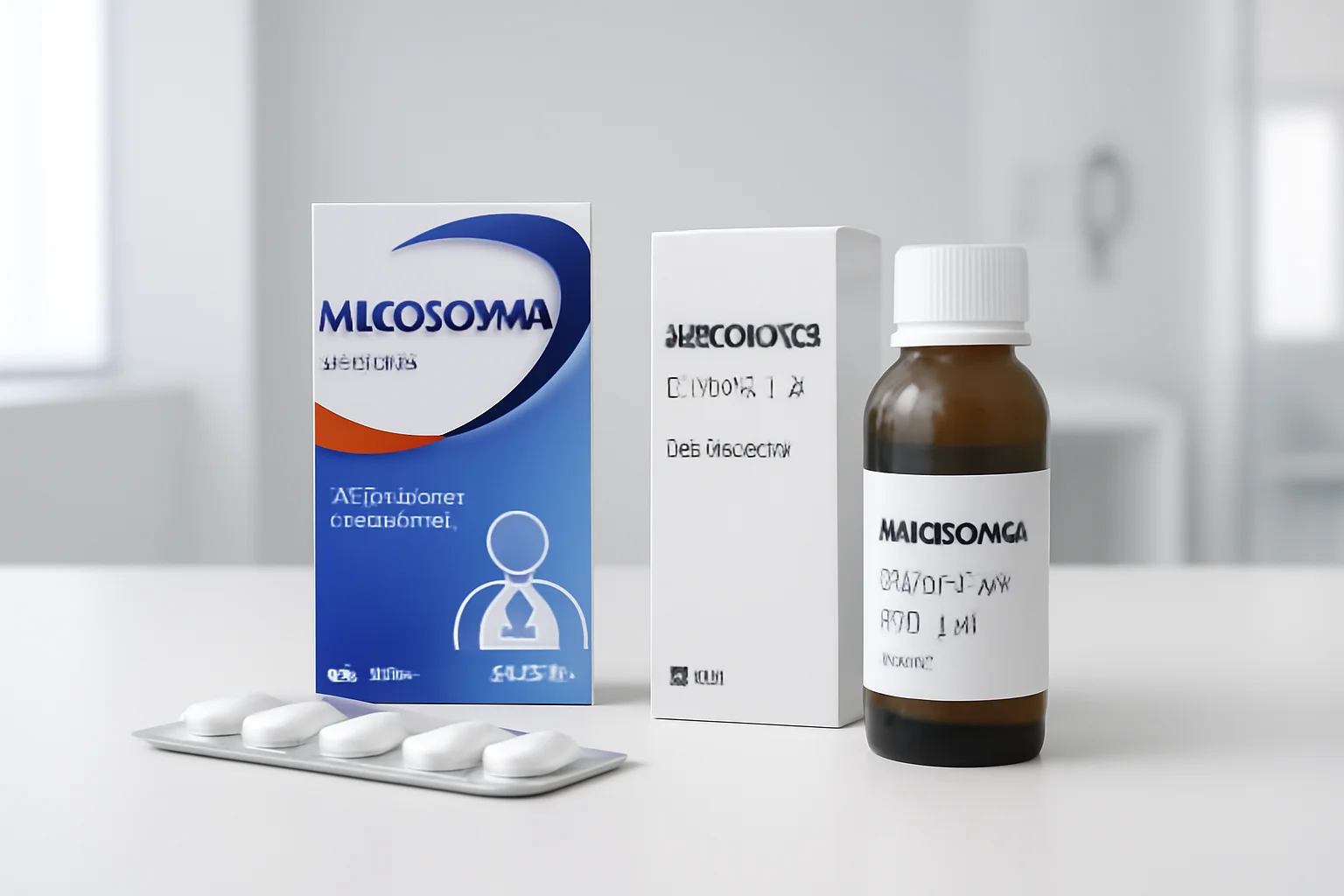
Mucosolvan and ambroxol: an overview of their effectiveness and application
A respiratory diseases, infections, and allergic reactions are often accompanied by coughing and mucus accumulation in the airways. These symptoms are not only uncomfortable but can also adversely affect health. In such cases, the proper use of medications is crucial for promoting recovery and alleviating symptoms. Two commonly used medications are Mucosolvan and Ambroxol, which aim to clear the airways and suppress coughing. These medications are available in various forms, and while they have a similar mechanism of action, they are characterized by different ingredients and methods of application. To make the right choice, it is important to understand their effects, areas of application, and potential side effects. The purpose of this article is to help users understand when to choose Mucosolvan or Ambroxol and what to pay attention to during use.
Mucosolvan: Effects and Application
Mucosolvan is an expectorant medication that contains the active ingredient ambroxol hydrochloride. Mucosolvan is primarily used for treating respiratory diseases as it helps to thin and remove mucus. The mechanism of action of the medication lies in stimulating the mucous membrane of the airways, thereby increasing mucus production and improving airway clearance.
The use of Mucosolvan is particularly recommended in cases of cough, bronchitis, pneumonia, and other respiratory diseases when mucus accumulates in the airways. The medication is available in various forms: tablet, syrup, and inhalation solution. The syrup form is especially popular among children due to its sweet taste, making it easier to consume. The inhalation solution is effective for treating respiratory diseases as it delivers the active ingredient directly to the airways.
When using Mucosolvan, it is important to consider the recommended dosage and usage instructions. Adhering to the doses prescribed by the doctor helps avoid side effects and overdose. The most common side effects include gastrointestinal disturbances, such as nausea or diarrhea. Allergic reactions may also occur, so it is important to consult a doctor if any unusual symptoms arise.
Ambroxol: Effects and Application
Ambroxol is also an expectorant medication that contains the active ingredient found in Mucosolvan. The purpose of using Ambroxol is to increase mucus production in the airways and suppress coughing. The mechanism of action of the medication is similar to that of Mucosolvan, as it stimulates the mucous membrane and facilitates the removal of secretions.
Ambroxol is used for various respiratory diseases, such as chronic bronchitis, asthma, or pneumonia. The medication has anti-inflammatory and analgesic effects, which contribute to alleviating respiratory difficulties. Ambroxol is available in syrup and tablet form and is easily dosed for children as well.
During the use of the medication, careful attention must be paid to the appropriate dosage, as overdose can cause side effects. The most common side effects include nausea, diarrhea, and skin rashes. When using Ambroxol, it is important for patients to monitor their health condition and consult a doctor in case of any unusual reactions.
Comparison: Mucosolvan and Ambroxol
Although Mucosolvan and Ambroxol contain the same active ingredient, it is important to understand the differences between the two medications. One major difference is the forms of medication and methods of use. Mucosolvan generally offers wider applicability, as it is available in various forms such as syrup, tablet, and inhalation solution. In contrast, Ambroxol is typically available in tablet and syrup forms.
Additionally, the effects of Mucosolvan can be felt more quickly, as the medication focuses on thinning and removing mucus. Ambroxol, while also effective, tends to concentrate more on reducing inflammation and suppressing cough. The choice between these two medications depends on the patient’s condition, the severity of symptoms, and the doctor’s recommendation regarding which is more appropriate.
It is important to mention that both Mucosolvan and Ambroxol are available over the counter, but it is always advisable to consult a doctor before use. The doctor can help select the most appropriate medication and ensure the correct dosage. Furthermore, patients should be aware of potential side effects and drug interactions to avoid unwanted reactions.
Side Effects and Precautions
When using both Mucosolvan and Ambroxol, it is important to consider the potential side effects. The most common side effects include gastrointestinal disturbances such as nausea, diarrhea, or abdominal pain. These symptoms are usually mild and transient, but if they persist, medical consultation is recommended.
Additionally, allergic reactions such as skin rashes, itching, or breathing difficulties may occur. If the patient experiences any unusual symptoms, they should seek medical attention immediately. The doctor can assist in managing any potential allergic reactions and discontinuing the medication if necessary.
It is important to note that Mucosolvan and Ambroxol are not recommended for certain health conditions, such as severe liver or kidney disease, as these can affect the metabolism and elimination of the medications from the body. Special caution should also be exercised during pregnancy or breastfeeding, and it is essential to consult a doctor before using any medication.
Overall, Mucosolvan and Ambroxol are useful medications for treating respiratory diseases, but like all medications, responsible and informed use is important. To achieve the best results, always follow the doctor’s instructions and pay attention to your own health condition.
Attention: This article does not constitute medical advice. Always consult a doctor for health issues!

